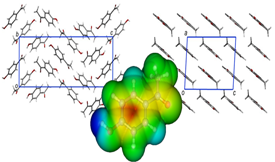DLPGEN is a Fortran program designed to create input files for DL_POLY, GROMACS, LAMMPS, and CHARMM molecular dynamics programs. As input, it accepts *PDB, *XYZ, Z-matrix, or COR files containing molecular information. The program can produce simulation boxes for crystalline structures or expanded boxes. For crystal structure construction, single-crystal X-ray data (including unit cell parameters, symmetry operations, and reduced coordinates) is required. DLPGEN reads COORD files, which can be obtained from the Cambridge Structural Database using CONQUEST or manually created from other data sources (e.g., CIF files). Additionally, DLPGEN can automatically call PACKMOL to generate the initial simulation boxes.
The current version is operational but may contain bugs. If you encounter any issues or have questions, please do not hesitate to contact me.
DLPGEN is free software distributed under the terms of the GNU General Public License as published by the Free Software Foundation. This program is distributed in the hope that it will be useful, but WITHOUT ANY WARRANTY; without even the implied warranty of MERCHANTABILITY or FITNESS FOR A PARTICULAR PURPOSE. See the GNU General Public License for more details. In no event will the author be liable for any damages, including but not limited to general, special, incidental, or consequential damages arising out of the use or inability to use the program, loss of data or data being rendered inaccurate, losses sustained by you or third parties, or a failure of the program to operate with any other programs, even if the author has been advised of the possibility of such damages.
To support continued development of the software, please register your download. If the software proves useful in your research, kindly cite the reference below in your publications:
- C. E. S. Bernardes; J. Chem. Inf. Model. 2022, 62, 1471-1478.
The program download, additional software information, and input files for various molecular species (which can be used directly as starting points for your simulations) are available through the links on the left.
